HTC Vive review
Virtual reality has finally come of age, but can it live up to all the promises?
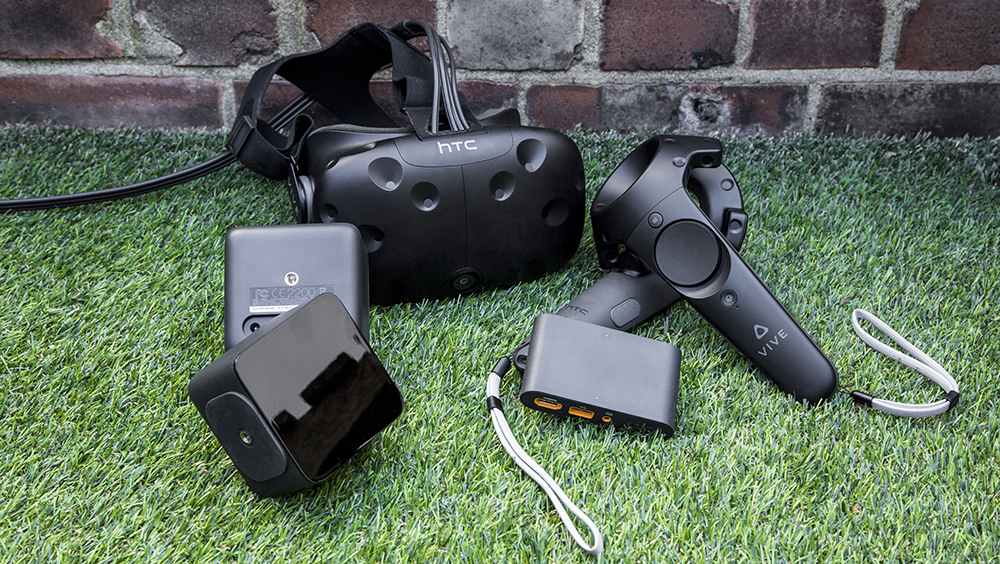

The HTC Vive is the sci-fi, virtual reality future we've all been waiting for, but if developers and content creators don't embrace it, all the technological innovation in the world won't save it from the scrapheap.
-
+
Incredibly immersive
-
-
Expensive; Requires a lot of space; Cabling can be awkward; Lack of stand-out games and apps

Virtual reality has felt like an unattainable pipe dream for years, sold by sci-fi as a way to escape our boring, mundane lives.
The reality of mobile-based VR headsets released so far, such as the Samsung Gear VR, have been underwhelming and mixed to say the latest. The HTC Vive is very different. Despite being made by HTC, best known for its Android smartphones, this VR headset needs a powerfully specified PC to run.
Comfort
There's no getting around the fact that using a VR headset will make you look very conspicuous. All the industrial design values in the world can't disguise the fact that you've got a giant hunk of plastic strapped to your face.
Aside from that, however, the headset itself is surprisingly comfortable. Its 555g weight is light enough that wearing it for extended periods doesn't feel too burdensome. You'll just forget it's there for most of the time.
Of course, that's partly to do with the fact that putting it on genuinely feels like stepping into the future. The 'wow factor' of high-end VR absolutely has to be experienced to be believed.
Be aware of the thick connection cables, which run over the top of the headset and down the wearer's back, connecting the Vive headset to your PC. Not only do they add a slight but nonetheless noticeable sense of weight to the user's head movements, they also pose a potential tripping hazard.
HTC has built in a 'chaperone mode' to deal with this issue, which uses the front camera to provide an electric blue overlay of your real-world surroundings onto the virtual environment.
Sadly, it's turned off by default, and has to be enabled within a set of developer options in the menu.
The chaperone mode is supposedly designed for situations like a pet unexpectedly running into the play area, but accidentally knocking something over or blundering into something is a larger potential problem by far, and one that it doesn't do a huge amount to prevent.
Hardware
The Vive is equipped with twin 1200 x 1080 OLED displays, which are viewed through Fresnel lenses. Although the latter should give the Vive slightly sharper images than the Oculus Rift on paper, they have identical resolutions and having tried both, we noticed virtually no difference.
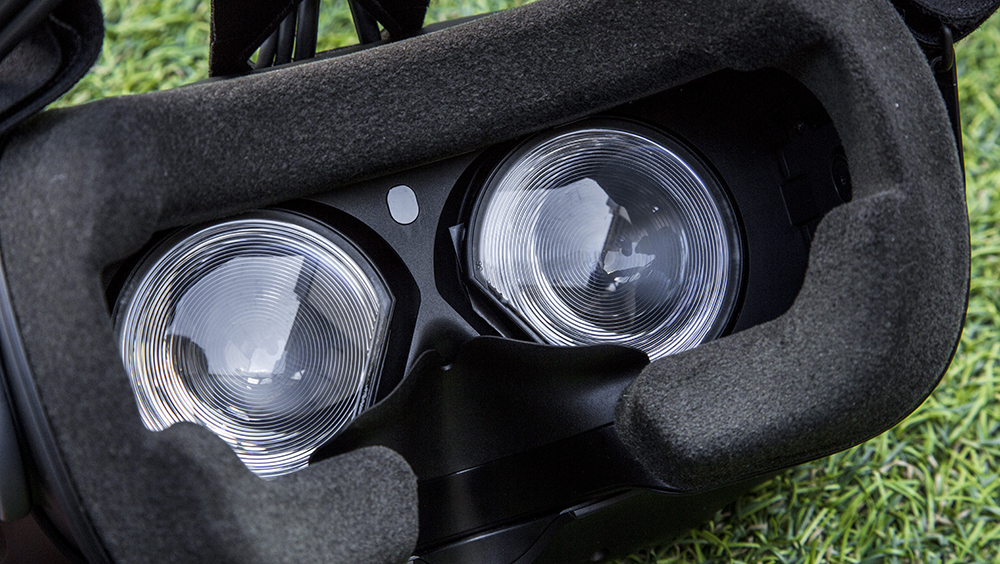
Both are usually more than clear enough for comfortable gaming. Text is a slight hiccup, however, as it tends to blur as it gets closer to the edge of one's peripheral vision.
A dial on the side of the headset lets you adjust the inter-pupillary distance in other words, how far apart the lenses are. This has the effect of focusing the images, but sadly, it doesn't have a huge amount of effect on text.
The Vive uses two 'Lighthouse' base stations to track the headset and handheld controllers. The base stations use lasers to communicate with sensors embedded in the other devices, so tracking speed is fast and latency is low.
It's not perfect, however - hand tracking had a nasty habit of going haywire, with the virtual controller jumping all around the environment. We're not sure what caused the issue, but waggling the handheld controllers around in the vague direction of one of the base stations appeared to fix it.
When it worked, though, the accuracy of the tracking was superb. Haptic feedback from the controllers even created a passable illusion of physically interacting with objects.
Requirements
The first thing that strikes one about the Vive is that it is not for the casual user. It's not like an Xbox or PS4, which you can just shove under the TV and forget about - it commands an entire room. The maximum play area is a whopping 15 x 15ft, but even the minimum is 6.5 x 5ft, which is more than many people will have available.
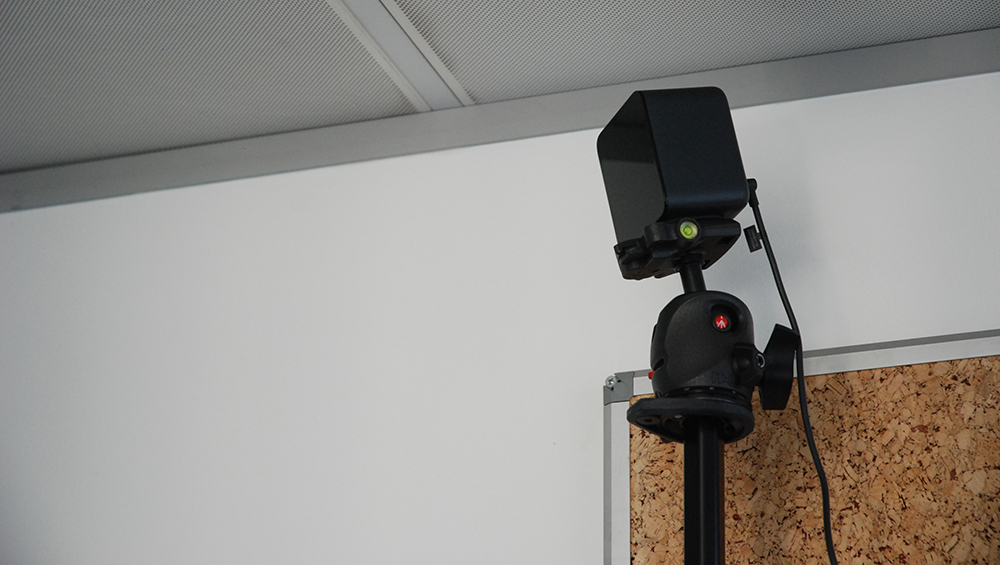
Not only do you need a large, clear playing space in which to use it, you'll also need several power outlets and somewhere to mount the two Lighthouse base stations (we used a pair of camera tripods), not to mention somewhere to put the monolithic gaming PC needed to power it in the first place.
Some games will have minimum recommended play areas, but most games are flexible about how much space is needed and will work just fine in smaller areas.
The main problem with playing in smaller spaces is the potential for smashing into furniture. This is less of a problem with first-person shooters or puzzle games, but you'll want to be careful if you're playing anything with large, expansive arm movements.
It's also best played with a friend. While the chaperone mode does work well enough for navigating around the playing space without taking off the headset, it's still a good idea to have someone around to make sure you don't crash into anything, particularly when you're dealing with almost 2,000 of kit once you include the cost of a suitably-specified PC.
Games
Games are currently the primary use for VR, but dedicated gamers are likely to be disappointed by the Vive.
While the Vive's launch lineup is more robust than those for some other VR headsets, most of its games are throwaway distractions. Many of them are cartoony games based around wrestling with a physics engine in order to perform basic tasks, and while they're great fun, they don't have staying power.
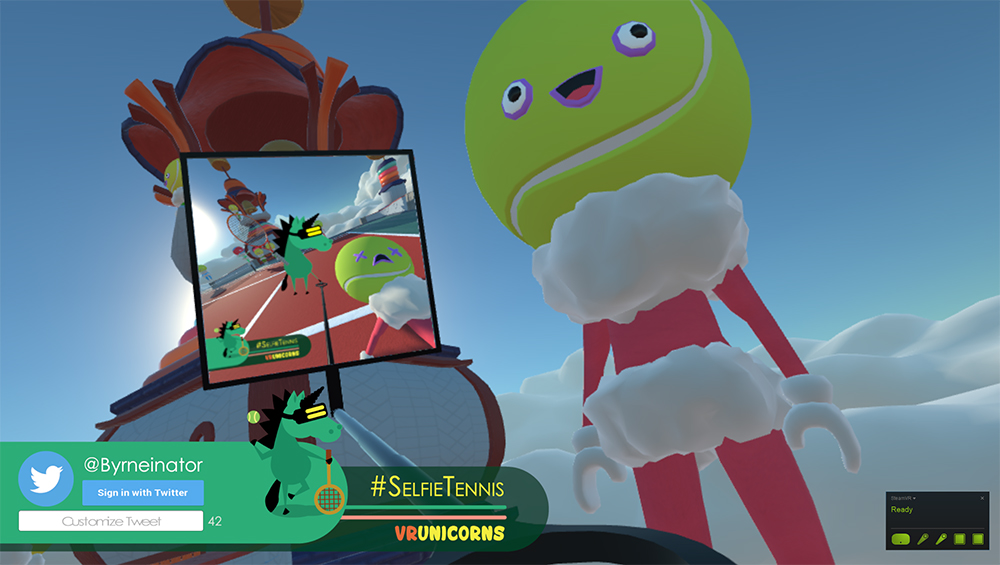
Games like Selfie Tennis and Job Simulator are good fun, and they're great for showing off the Vive to people that haven't used VR before, but they're not the kind of games that you're likely to go back to again and again.
The Vive is still sorely lacking a flagship title that will carry it through its infancy the way Mario did for the NES, or a killer app' to put it another way. Additionally, there appear to be very few of what most people consider to be 'full-length' games.
Big-budget triple-A' publishers have been extremely shy about bringing out VR content, with just a handful of games coming from major studios. Larger companies have always been a little hesitant about investing in new platforms, however, so we'd expect this to pick up in the next six months or so.
The Lab & other software
There are nonetheless some great experiences available on the Vive. The level of immersion is remarkable enough to inspire slack-jawed wonderment in VR first-timers.
The best examples of VR design come from 'The Lab', a free collection of tech demos designed by Valve. They're little more than minigames, but they're wonderfully charming.
For example, you can pick up and muck around with a little machine that creates helium balloons, and it is immeasurably, inexplicably satisfying. For some reason, just filling up endless balloons and batting them around takes on a kind of serene, zen-like appeal.
The same is true of the 'Postcards' experience. All it does is plop you down in the middle of a digitally recreated chunk of nature, stitched together from actual photos, but it's incredibly calming. There's such a high level of immersion that it genuinely feels like you're alone with nature.
One of the most interesting demos in The Lab is a body scan, featuring a 3D model of the human body. Select the torso, upper, or lower skull, and it will zoom in to show a more detailed view. There's even a cutaway section that you can pick up and move around to look at a CAT-scan style internal view.
It'll be a brief curiosity to most people, who will be more interested in the more traditional game experiences, but it really is the most interesting and important demo of the lot.
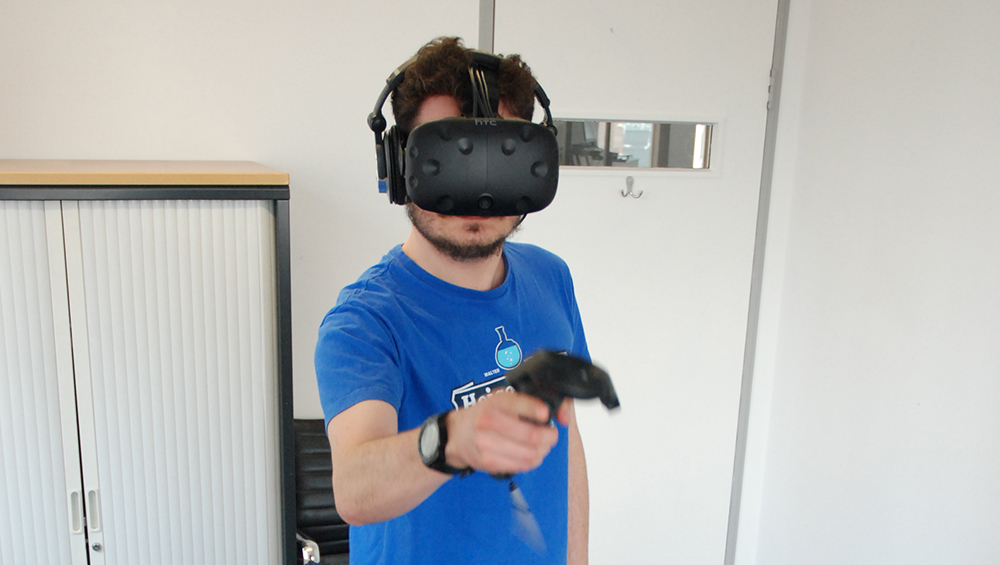
It's effectively a proof of concept for the Vive's use in verticals like healthcare and education. Letting children actually walk around and examine a human skeleton gives them the opportunity to interact with the subject in a way that's just not possible on paper.
It's also got huge potential for the medical industry. Overlaying actual data from a patient's medical scans onto that model could dramatically improve diagnosis tools. Fundamentally, it demonstrates that VR does have uses outside of gaming and it's going to be those that propel VR as a whole to long-term success.
Google-developed application Tiltbrush is similarly jaw-dropping in its potential. The potential of this three-dimensional painting app, if you gave it to an actual artist, is astonishing.
And then there's desktop use, which is nothing more than projecting your standard Windows desktop as a massive screen - around 225in, by Valve's count - within a virtual environment.
It's childish and superficial, but interacting with a standard desktop through VR feels like the closest we're likely to come to Minority Report-style holographic displays. The only downside is that text isn't particularly readable at default Windows scaling, but it's still a cool way to work.
Conclusions
VR is a truly thrilling technology and the HTC Vive shows that it can work well even within the realms of business. Sadly yet inevitably, it has some critical flaws.
Firstly, it's way too costly, both in space and in monetary terms. 750 inc VAT and delivery (575 excluding) keeps it confined to early adopters, developers and others with deep pockets.
Far more damaging, for now at least, is the lack of any games and other content that provide a tangible benefit or could convincingly hold anyone's attention for extended periods of time. A lack of quality software in significant numbers is what eventually killed the Wii U and Windows Phone. Without some serious investment on the software development side, the Vive could be heading the same way.
The Vive is undeniably impressive and it has a huge amount of untapped potential, but for now, it's a vision of what the future could be - not what it is.
Verdict
The HTC Vive is the sci-fi, virtual reality future we've all been waiting for, but if developers and content creators don't embrace it, all the technological innovation in the world won't save it from the scrapheap.
System Requirements:
Graphics card: NVIDIA GeForce GTX 970 / AMD Radeon R9 290 equivalent or greater Processor: Intel Core i5-4590 / AMD FX 8350 equivalent or greater RAM: 4GB+ Video Output: HDMI 1.4 or DisplayPort 1.2 or newer USB Port: 1x USB 2.0 Operating System: Windows 7 SP1 or newer
Get the ITPro daily newsletter
Sign up today and you will receive a free copy of our Future Focus 2025 report - the leading guidance on AI, cybersecurity and other IT challenges as per 700+ senior executives
Adam Shepherd has been a technology journalist since 2015, covering everything from cloud storage and security, to smartphones and servers. Over the course of his career, he’s seen the spread of 5G, the growing ubiquity of wireless devices, and the start of the connected revolution. He’s also been to more trade shows and technology conferences than he cares to count.
Adam is an avid follower of the latest hardware innovations, and he is never happier than when tinkering with complex network configurations, or exploring a new Linux distro. He was also previously a co-host on the ITPro Podcast, where he was often found ranting about his love of strange gadgets, his disdain for Windows Mobile, and everything in between.
You can find Adam tweeting about enterprise technology (or more often bad jokes) @AdamShepherUK.
-
 ‘Phishing kits are a force multiplier': Cheap cyber crime kits can be bought on the dark web for less than $25 – and experts warn it’s lowering the barrier of entry for amateur hackers
‘Phishing kits are a force multiplier': Cheap cyber crime kits can be bought on the dark web for less than $25 – and experts warn it’s lowering the barrier of entry for amateur hackersNews Research from NordVPN shows phishing kits are now widely available on the dark web and via messaging apps like Telegram, and are often selling for less than $25.
By Emma Woollacott Published
-
 Redis unveils new tools for developers working on AI applications
Redis unveils new tools for developers working on AI applicationsNews Redis has announced new tools aimed at making it easier for AI developers to build applications and optimize large language model (LLM) outputs.
By Ross Kelly Published
-
 Google layoffs continue with "hundreds" cut from Chrome, Android, and Pixel teams
Google layoffs continue with "hundreds" cut from Chrome, Android, and Pixel teamsNews The tech giant's efficiency drive enters a third year with devices teams the latest target
By Bobby Hellard Published